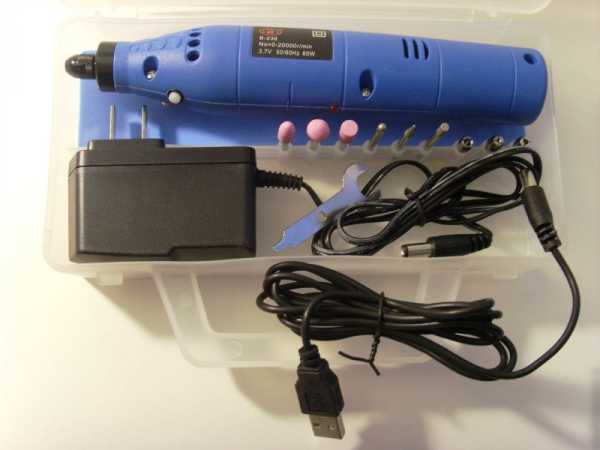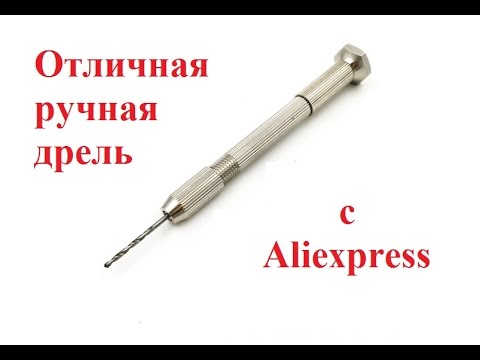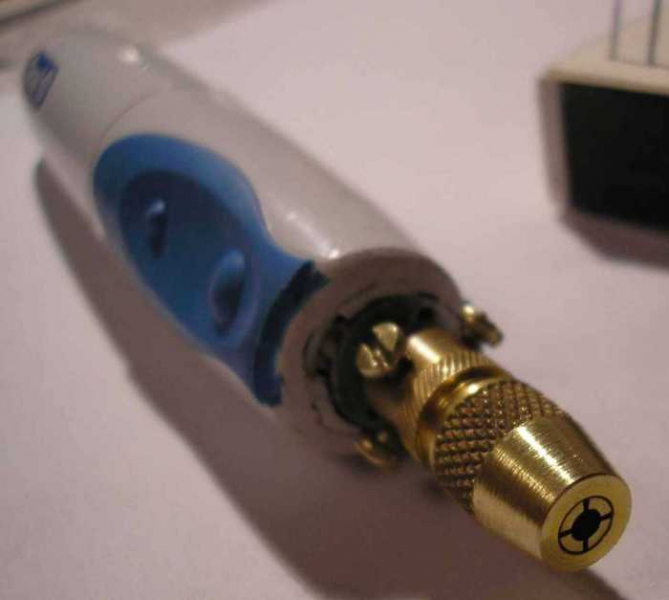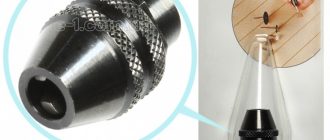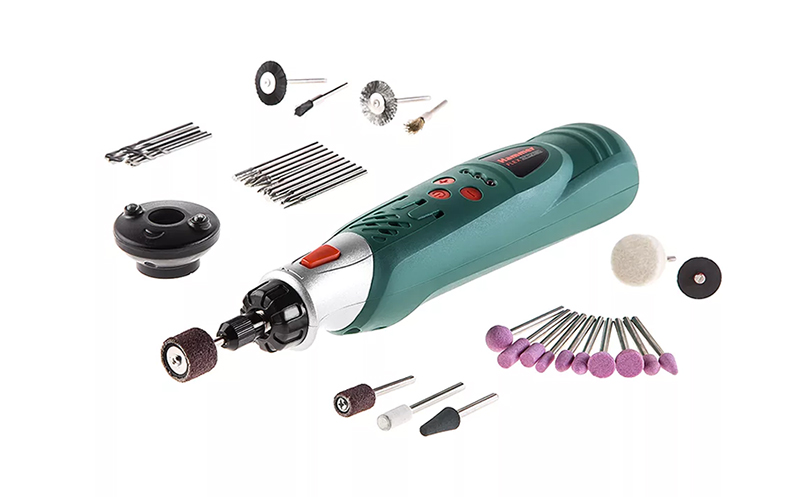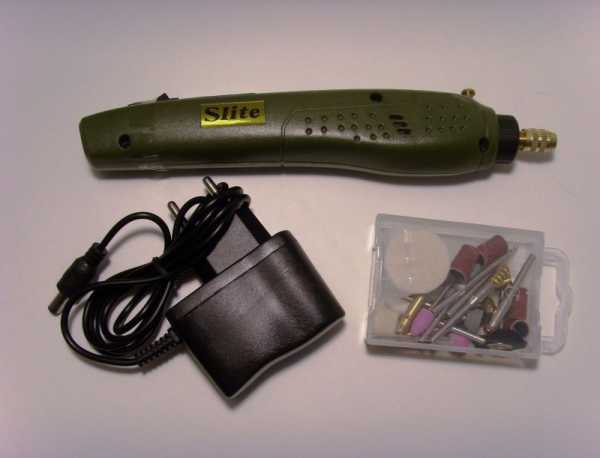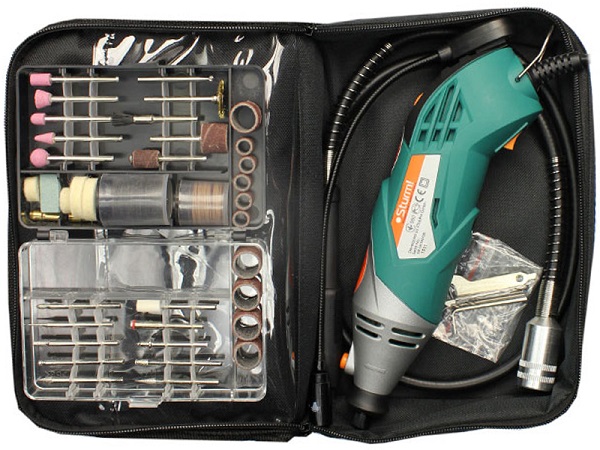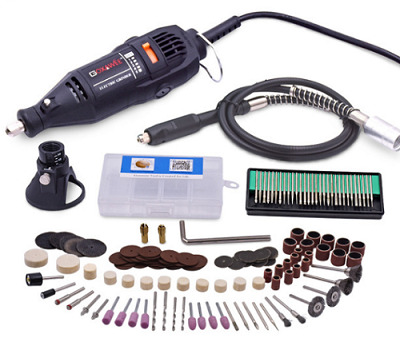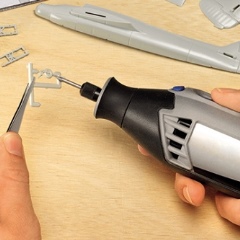Scope of application and possibilities
Mini drills are used in many types of production activities:
- Jewelry Art;
- engraving;
- watch making;
- small sculpture;
- artistic cutting (wood, bone);
- glass processing;
- computer modding;
- restoration of old cars;
- aircraft modeling;
- instrument and mechanical engineering.
What you can do with a dremel:
- drill holes of different sizes in wood, plastic, metal, precious materials, ceramics, glass;
- form miniature tongue-and-groove joints;
- cut in a straight line, grind, polish the listed materials and perform their milling;
- engrave on products;
- clean surfaces from oxides, rust;
- finish machining parts in two-stroke internal combustion engines in order to obtain accurate dimensions and achieve low surface roughness;
- sharpen miniature workpieces, apply patterns, drawings and inscriptions.
The fulfillment of all these functions is made possible by equipping the device with drills, milling cutters, sanding sheets, cutting discs, brushes, attachments for working with various materials.
How to choose?
Today's electrical appliance market is replete with all kinds of mini-drill models, which creates certain difficulties when choosing the right tool
There are a few things to look out for when buying a doorman to avoid mistakes and disappointments.
- Power rating is a criterion that determines the performance of a tool. When choosing equipment of optimal power, it is necessary to take into account the purpose of its use. If we are talking about home use, then it is better to give preference to models with power ratings up to 200 W, and units from 240 W are suitable for professionals.
- Maximum working speed. The comfort of work is provided by units with a rotation speed of 20,000 rpm. Although against the background of branded models with a capacity of 150–160 W, capable of delivering 30,000–35,000 rpm, this value seems to be more than modest. For the simplest engravers for amateur purposes, the number of revolutions varies in the range of 6,000–10,000 rpm.
- Rotation speed control. The presence of a speed regulator increases the ease of use of the tool. Most mini-drills have a stepless speed control, which makes it possible to adjust the speed of the electric motor from a safe minimum to maximum.
- Weight and ergonomics. Manual units should not be heavy, otherwise the hand will quickly get tired, which can negatively affect the quality of work. It is optimal when the tools weigh 600–800 grams. and at the same time have high power.
- Noise characteristics. If in repair shops the noise level of the engraver is not so important, then for use in residential premises, low-noise equipment is definitely needed so as not to displease neighbors.
- Collet working diameter. It is the parameters of the collet that determine the possibility of installing certain nozzles into the tool. The most common collet options are Ø 2.4 and Ø 3.2 mm. They are equally suitable for home use, hobby use, and professional handling.
- Equipment. The cheapest mini drills are sold without accessories. Choosing products of a more expensive price segment, you can become the owner of an extended basic set, consisting of a flexible shaft, an angle adapter, a box with accessories, spare graphite brushes for the motor, collets with different diameters, letter templates for engraving work, a suspension stand and a case.
- Manufacturer and cost.Now there are many reputable manufacturers of high-quality and reliable power tools, among them - Boshe, Dremel, Einhell, Elitech, Hammer, Patriot, Sturm, Whirlwind, Diold, Zubr, Caliber. The prices for equipment of different brands differ - and quite significantly. When the plans include the use of an engraver from time to time, then there is no point in overpaying for expensive professional equipment from a renowned manufacturer.
How to do it yourself?
The simplicity of the design of the mini-drill makes it available to assemble it with your own hands from ready-made assemblies and components for electrical appliances.
For work you will need:
- 12V electric motor from an old radio tape recorder or a dynamic toy;
- power supply unit (PSU) 12V, you can use an adjustable PSU from 5 to 25V;
- a piece of plastic tube of a suitable diameter;
- high temperature glue;
- on / off button;
- wires for wiring.
Procedure:
- with a knife we make a cutout for the switch in the tube;
- we process the engine with an adhesive for the reliability of fixation in the case and place it inside it;
- we put the positive wire from the engine into the cutout of the case, pull the negative wire out through its rear part;
- we take a soldering iron and solder both wires to the switch, observing the polarity and mandatory isolation of the contacts;
- the wires from the switch and the engine, which remained at the end of the case, are connected to the socket for the power supply unit;
- cut off the neck from the PET bottle;
- make a hole in the center of the lid for a connector, and then fix it in the hole with hot melt glue;
- we connect the assembled device to the power supply unit;
- press the button to test the performance of the homemade doze.
Such a device is convenient for drilling soft materials (wood, plastic) and engraving on wood products. It can also be useful for radio amateurs for drilling and cutting printed circuit boards.
For an overview of the Whirlwind mini-drill, see the next video.

